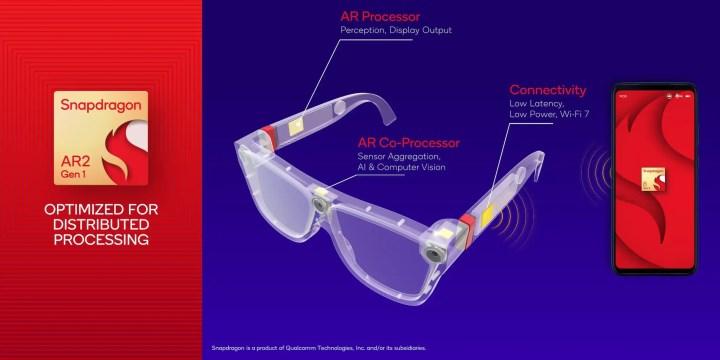 Qualcomm introduced the Snapdragon AR2 Gen 1 platform, designed with thin augmented reality (AR) glasses in mind. According to the company’s XR2-based reference design, there is a 2.5-fold improvement in artificial intelligence performance.
Qualcomm introduced the Snapdragon AR2 Gen 1 platform, designed with thin augmented reality (AR) glasses in mind. According to the company’s XR2-based reference design, there is a 2.5-fold improvement in artificial intelligence performance.Thin, lightweight augmented reality glasses
Qualcomm says they have achieved a thin and light design by spreading the computing load across the eyeglass frame. It includes engines and graphics for features such as 4nm-based AR processor, single CPU, Tensor AI processing, visual analytics.
It supports up to nine simultaneous cameras to monitor both the body and the surroundings of the person. The coprocessor in the glasses contains an artificial intelligence accelerator for tasks such as eye tracking and computer vision, while the third chip manages the connection to the network and phones. Not only does this balance weight better, it’s a single chip that can do it all, so there’s smaller circuit boards and fewer wires to deal with.
AR2 Gen 1 is one of the first platforms to support WiFi 7, like Qualcomm’s new mobile processor Snapdragon 8 Gen 2. According to Qualcomm, it provides a large amount of bandwidth (up to 5.8Gbps) to connect to the phone, as well as reducing latency to less than 2ms.
Qualcomm has also brought updates to its audio technology. The new S3 Gen 2 Sound and S5 Gen 2 Sound platforms bring improvements to spatial audio with head tracking, lower latency for games, and adaptive active noise cancellation. We won’t be able to see headphones with these chips until the second half of 2023.